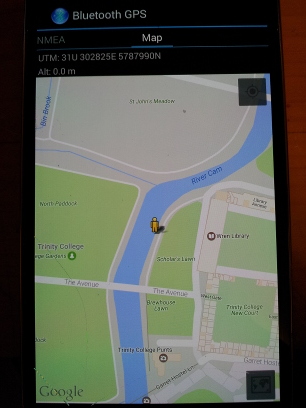GPS Simulation: Difference between revisions
Jump to navigation
Jump to search
m (→Introduction) |
|||
| Line 8: | Line 8: | ||
[[File:TrinityCollege_s1r1.jpg]] | [[File:TrinityCollege_s1r1.jpg]] | ||
Software to git clone - https://github.com/osqzss/gps-sdr-sim | Software to git clone - https://github.com/osqzss/gps-sdr-sim <br/> | ||
Follow the instructions on the github page for how to compile, it is a very easy procedure on Ubuntu with build-essential package installed. | Follow the instructions on the github page for how to compile, it is a very easy procedure on Ubuntu with build-essential package installed. <br/> | ||
Note there is a setting in gpssim.h for USER_MOTION_SIZE default 3000 max duration at 10MHz. You can increase that to 6000 or more to get longer default running times. | Note there is a setting in gpssim.h for USER_MOTION_SIZE default 3000 max duration at 10MHz. You can increase that to 6000 or more to get longer default running times. | ||
Revision as of 16:38, 28 February 2017
Introduction
This page details experiences using LimeSDR to simulate GPS.
These experiments were inspired by the excellent procedure written up here [1]. We want to use a similar process to target real devices, and have had luck with a qstarz 818XT bluetooth gps device a couple of inches from an antenna. Here I am visiting Trinity College Cambridge.
Software to git clone - https://github.com/osqzss/gps-sdr-sim
Follow the instructions on the github page for how to compile, it is a very easy procedure on Ubuntu with build-essential package installed.
Note there is a setting in gpssim.h for USER_MOTION_SIZE default 3000 max duration at 10MHz. You can increase that to 6000 or more to get longer default running times.
| |||||||||||||||||||||
